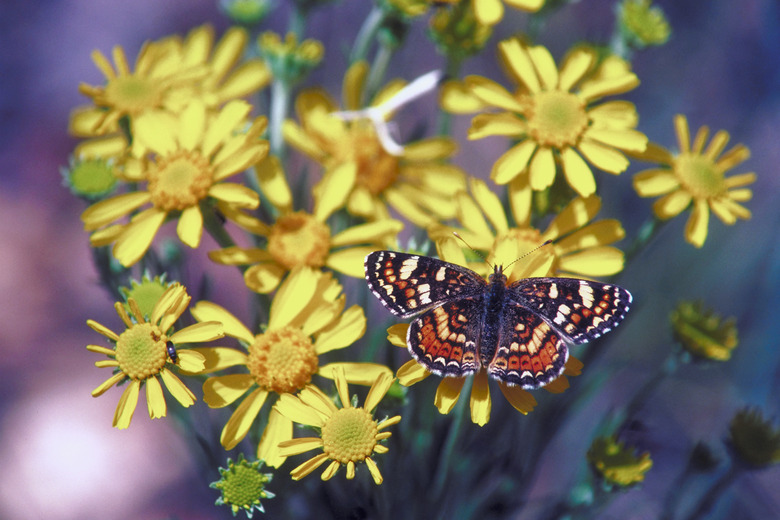Why Are Butterflies Important?
Butterflies are a diverse group of insects containing around 20,000 different species. North America is home to more than 700 of these species. Each type has various behavioral and structural adaptations that allow them to survive in their environment.
Butterflies are aesthetically pleasing and few species cause any damage to commercial plants. Butterflies contribute to thriving ecosystems and can indicate the state of an ecosystem's health.
Pollination
Butterflies play an important role in pollinating flowers, particularly flowers that have a strong scent, are red or yellow in color and produce a large amount of nectar. Nectar is an important component of a butterfly's diet.
The importance of butterfly pollination to plant reproduction may not be equal to that of honeybees but several plant species, like milkweed and other wildflowers, depend on butterflies to transfer their pollen.
Like bees, pollen collects on the butterfly's body as it is feeding on a flower's nectar. As the butterfly moves on to a new flower, it carries the pollen with it.
Important Components of a Thriving Ecosystem
Important Components of a Thriving Ecosystem
An abundance of butterflies is often an indication that an ecosystem is thriving. This is due to the fact that butterflies are an important component of a food chain, as predators and prey. Adult butterflies and caterpillars are an important source of food for other animals such as bats and birds.
Along with nectar, butterflies eat a variety of plants. Some species also provide a natural form of pest control. For example, the harvester butterfly eats aphids while it is in its caterpillar form.
Climate Change
Climate Change
Butterflies are particularly sensitive to climate change. Scientists monitor butterflies as a method of watching for warning signs of the more widespread effects of climate change.
One example of these studies involves monitoring Edith's checkerspot butterflies in North America. According to the National Academy of Sciences, the distribution of these butterflies has shifted further north and to higher elevations as the result of an increase in temperature.
Declining populations of butterflies as a result of climate change have consequences for many other species. Animals such as birds, small mammals and other insects that depend on butterflies and caterpillars, can lose an important food source and have to shift their diet to less desirable or less available species.
Butterfly Enthusiasts
Butterfly Enthusiasts
The study of butterflies has been a common hobby, particularly in Victorian times. Butterflies provide butterfly enthusiasts with a great deal of pleasure.
Like bird watchers, they enjoy spotting rare species. Butterflies also benefit economies by attracting tourists. Areas such as Mexico's monarch roost benefit from tourism as butterfly enthusiasts travel around the world to photograph the little beauties.
Importance to Science
Importance to Science
As well as being an indicator of climate change, butterflies are also sensitive to other threats such as habitat destruction. Changes in the behavior of butterflies can warn people of the future effects of habitat loss on other animals.
As many species of butterflies are highly specialized, individual species can be of particular benefit to science. For example, Europe's meadow brown butterfly produces a natural antibiotic that may be useful for humans.
Importance of Gardening
Importance of Gardening
As natural habitats are being destroyed to accommodate new developments, the importance of gardening in ensuring robust butterfly populations is becoming more evident. Creating a butterfly ecosystem within your garden as well as in parks and other naturalized areas helps combat this loss of natural habitats.
Planting butterfly friendly plants, having sunny areas for butterflies to bask and warm up, along with providing a shallow water source such as a bird bath will all help to attract butterflies to your garden.
Cite This Article
MLA
Ames, Hayley. "Why Are Butterflies Important?" sciencing.com, https://www.sciencing.com/butterflies-important-8749269/. 30 July 2019.
APA
Ames, Hayley. (2019, July 30). Why Are Butterflies Important?. sciencing.com. Retrieved from https://www.sciencing.com/butterflies-important-8749269/
Chicago
Ames, Hayley. Why Are Butterflies Important? last modified March 24, 2022. https://www.sciencing.com/butterflies-important-8749269/
